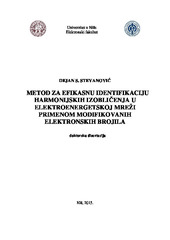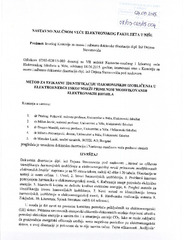| dc.contributor.advisor | Petković, Predrag | |
| dc.contributor.other | Jevtić, Milun | |
| dc.contributor.other | Mančić, Dragan | |
| dc.contributor.other | Petronijević, Milutin | |
| dc.contributor.other | Lazić, Miroslav | |
| dc.creator | Stevanović, Dejan S. | |
| dc.date.accessioned | 2017-01-30T12:21:28Z | |
| dc.date.available | 2017-01-30T12:21:28Z | |
| dc.date.available | 2020-07-03T16:01:57Z | |
| dc.date.issued | 2015-12-28 | |
| dc.identifier.uri | http://eteze.ni.ac.rs/application/showtheses?thesesId=4487 | |
| dc.identifier.uri | https://nardus.mpn.gov.rs/handle/123456789/7447 | |
| dc.identifier.uri | https://fedorani.ni.ac.rs/fedora/get/o:1221/bdef:Content/download | |
| dc.identifier.uri | http://vbs.rs/scripts/cobiss?command=DISPLAY&base=70052&RID=533863574 | |
| dc.description.abstract | The development of electronics has enabled the production of smart, energy-efficient
appliances and equipment. Their application both in industry and in households has
contributed to significant savings in electricity consumption and to CO2 emission reduction
respectively. At first glance, it appears that significant progress has been made without any
negative consequences. Unfortunately, that is not entirely true. Namely, modern electronic
devices are based on direct current voltage (DC) and are supplied with alternating current
(AC). The process of converting alternating current to direct current voltage is done by using
the AC/DC converter. It is necessary to ensure minimum losses in the converter itself in order
to increase the conversion efficiency. This is achieved when transistors operate in the switch
mode. The current flowing through transistors is the strongest when transistor voltage is
minimal and vice versa. Transistors operate at a frequency of several kHz. As a result of this
operating mode, the device acts as an extremely nonlinear load which is manifested by pulse
current energy consumption. From the standpoint of the utility system, this means that
electricity does not follow the sinusoidal voltage waveform but that it is rich in
harmonics. The harmonic components of the current flow through the utility and create
additional harmonic voltage components at the final impedance lines. This leads to changes
in the voltage waveform for all nearby consumers and the whole utility as well.
In order to preserve the utility, the relevant international organizations have set standards
which limit the maximum permissible value of the harmonics. The most famous standards in
this field (IEEE 519-1992, IEC series 61000 and EN 50160) do not define the method which
will be used to detect the dominant source of harmonic distortion. As a result, there are
numerous methods in the current literature and practice that can be used for this purpose.
Firstly, numerous adverse effects caused by the presence of harmonics in the electricity
system were analyzed in this dissertation. Then, an overview of the existing methods for the
identification of harmonic distortion sources was given. A thorough analysis on real
examples has shown that the most widely used method based on the measurement of the
active power harmonic components is not reliable. A common drawback of all the existing
decisions is represented by a complicated implementation that disqualifies their application at
the level of individual consumers (power meters). Therefore, it is mainly applied at the level
of substations.
A completely new method based on the measurement of power distortion is proposed in
this dissertation in order to identify sources of harmonic distortion in the power network. The
main advantage compared to competing solutions is the possibility to use it within the
standard electronic meter. Moreover, the method can be implemented by modifying the
standard meter at the software or hardware level. Irrespective of the type of implementation
of this method, its application allows the distributor to receive information about the
harmonic distortion source location directly at the level of consumers who caused them. The
proposed method has been verified by simulations at a functional level and by measurements
with the use of standard electronic meter and a personal computer. At the same time, the role
of the personal computer can be transferred to the DSP, i.e. to the microprocessor part of the
latest generation of meters through the software level intervention.
Bearing in mind the fact that a large amount of meters of the old generation is used, the
prototype of hardware device has been developed in order to extend the functions of the
existing meters. The prototype was realised on the Cyclone 2 FPGA by the use of Altera DE2
development board. It enables the electricity distributor to identify the nonlinear load at the
place of the connection to the network without replacing the existing electronic meters.
A new generation of ASIC integrated Power Meters is currently being developed at the
Faculty of Electronic Engineering LEDA Laboratory, University of Niš. The proposed
method will be incorporated within the DSP block and realized in AMS 018mm CMOS
technology. | en |
| dc.format | application/pdf | |
| dc.language | sr | |
| dc.publisher | Универзитет у Нишу, Електронски факултет | sr |
| dc.rights | openAccess | en |
| dc.rights.uri | https://creativecommons.org/licenses/by/4.0/ | |
| dc.source | Универзитет у Нишу | sr |
| dc.subject | Harmonici | sr |
| dc.subject | Harmonics | en |
| dc.subject | izvori harmonijskih izobličenja | sr |
| dc.subject | snaga izobličenja | sr |
| dc.subject | elektronsko brojilo | sr |
| dc.subject | FPGA | sr |
| dc.subject | source of harmonic pollutions | en |
| dc.subject | power distortion | en |
| dc.subject | electronic power meter | en |
| dc.subject | FPGA | en |
| dc.title | Metod za efikasnu identifikaciju harmonijskih izobličenja u elektroenergetskoj mreži primenom modifikovanih elektronskih brojila | sr |
| dc.type | doctoralThesis | en |
| dc.rights.license | BY | |
| dcterms.abstract | Петковић, Предраг; Манчић, Драган; Лазић, Мирослав; Јевтић, Милун; Петронијевић, Милутин; Стевановић, Дејан С.; Метод за ефикасну идентификацију хармонијских изобличења у електроенергетској мрежи применом модификованих електронских бројила; Метод за ефикасну идентификацију хармонијских изобличења у електроенергетској мрежи применом модификованих електронских бројила; | |
| dc.identifier.fulltext | https://nardus.mpn.gov.rs/bitstream/id/52109/Stevanovic_Dejan.pdf | |
| dc.identifier.fulltext | http://nardus.mpn.gov.rs/bitstream/id/52108/Disertacija7453.pdf | |
| dc.identifier.fulltext | http://nardus.mpn.gov.rs/bitstream/id/52109/Stevanovic_Dejan.pdf | |
| dc.identifier.fulltext | https://nardus.mpn.gov.rs/bitstream/id/52108/Disertacija7453.pdf | |
| dc.identifier.rcub | https://hdl.handle.net/21.15107/rcub_nardus_7447 | |



